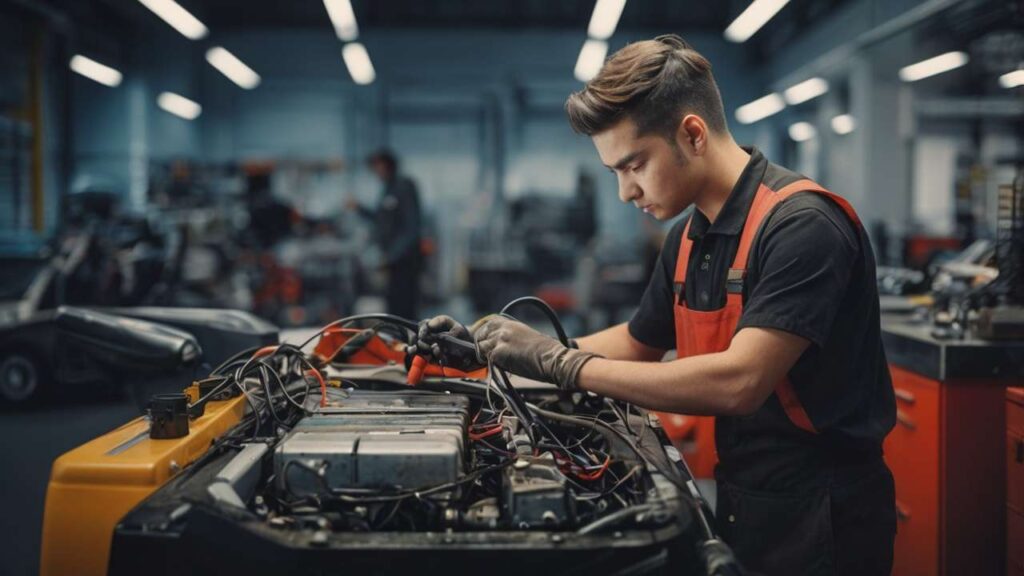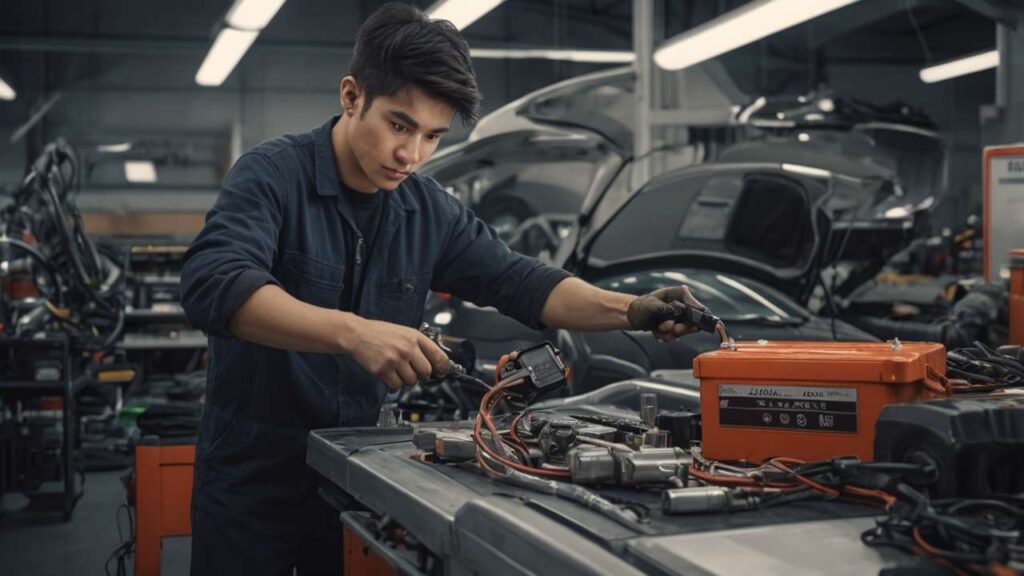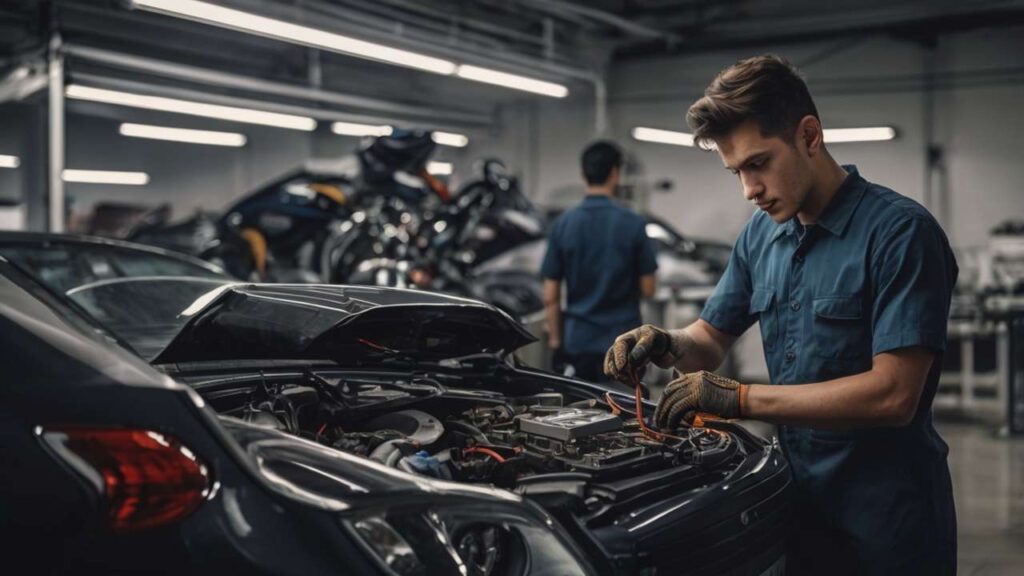Every driver eventually faces the dreaded click-click of a dead battery. And right there in the parking lot, a decision has to be made: do you grab jumper cables and go full DIY mode, or do you call in a professional specialist to save the day? This dilemma is not just about money—it’s also about safety, reliability, and even the long-term health of your vehicle.
A DIY vs. Pro: When Should You Jumpstart and When Should You Call a Specialist? type of question isn’t just theoretical. It shows up in grocery store lots, at midnight after work, or during a weekend trip when the only tool you have is Google and a friend who once “sort of” knew how to use jumper cables. The truth is, sometimes doing it yourself is fine—but sometimes it can be a very expensive mistake.
A Simple Yes/No Flowchart for Confused Drivers
Before we dive into stories, tools, and the nitty-gritty of safe jumpstarting, here’s a simple way to decide:
- Is the battery just weak? → Try a jumpstart if you have proper cables and another running vehicle.
- Is it completely dead and showing signs of a bigger issue (smell, swelling, repeated failures)? → Stop. Call a professional.
This flowchart might look overly simple, but I’ve seen people waste hours trying to crank life back into a battery that was literally cracked open. A trusted battery services specialist in North Carolina once told me: “Half the time, drivers think it’s the battery, but it’s actually the alternator or corroded terminals. DIY attempts make it worse.”
How to Safely Jumpstart a Car (Without Frying It)
I’ll be honest—jumpstarting isn’t rocket science, but it’s also not as harmless as YouTube makes it look. Done wrong, you can fry sensitive electronics or even cause a spark explosion. Here’s a safe step-by-step, with a couple of real warnings:
- Park the helper vehicle close. Engines off, parking brakes on.
- Connect the red clamp to the dead battery’s positive (+). Don’t touch anything else with it.
- Attach the other red clamp to the good battery’s positive.
- Black clamp to the good battery’s negative (-).
- Final black clamp goes to a metal ground on the dead car. (NOT the battery itself—yes, sparks happen.)
- Start the helper car, let it run for 2–3 minutes. Then try starting the dead car.
⚠️ Big warning: If you smell rotten eggs or see smoke—stop. That’s sulfuric acid leaking or a shorted battery. No jumpstart will fix that, and forcing it might blow up in your face.
Why DIY Jumpstarting Is Riskier Than You Think
Cars today aren’t like your granddad’s old Chevy. Modern vehicles are loaded with sensors, ECUs, and fragile electronics. A voltage surge from a poorly connected cable can knock out thousands of dollars in modules.
I once watched a neighbor try to jump his 2020 SUV from a motorcycle. Guess what? The SUV stayed dead, but the bike’s electrical system fried. That’s when he admitted, “I thought all batteries were the same.” They’re not. And that brings us to another resource worth checking: Motorcycle vs. Truck Batteries: Why Size and Power Matters.
DIY works when it’s just a weak battery from leaving headlights on. But if your battery keeps dying every week, or you see corrosion and cracks forming, there’s a deeper issue. Read this guide on Corrosion and Cracks: A Guide to Battery Health to see why ignoring it could shorten your car’s life.
Scenarios Where Only a Specialist Will Do
There are times where you simply should not gamble with jumper cables:
- Corroded or swollen battery terminals. Acid damage needs professional tools to clean safely.
- Dead battery in a tricky spot. Think cramped European cars where even reaching the terminals is a nightmare.
- Repeated failures. If your battery keeps dying, the issue might be the alternator or starter, not the battery itself. (See Beyond the Battery: How Your Alternator and Starter Affect Your Car’s Power.)
- High-end vehicles with sensitive electronics. Luxury cars often require controlled voltage jump packs, not cables.
Calling a trusted, reliable expert might cost a little upfront, but it saves thousands later. Specialists don’t just replace batteries—they diagnose. They’ll test charging systems, wiring, and even catch early signs of failing starters.
For example, one case study I came across in Raleigh involved a customer who thought his battery was dying every three months. A local professional specialist finally diagnosed the issue: a failing alternator regulator. After fixing that, his car’s new battery lasted years. That’s what we mean by “diagnosis, not just replacement.”
How Climate and Habits Kill Batteries Faster
Living in extreme weather areas makes things worse. In North Carolina’s unpredictable climate, summer heat and winter cold both drain batteries much quicker. The Ultimate Guide to Car Battery Life in North Carolina’s Climate explains it perfectly: batteries don’t just fail overnight, they’re slowly worn down by weather.
Even habits matter. Short trips with headlights and AC blasting keep the alternator from fully recharging the battery. Add in corroded terminals and you’ve got a recipe for constant roadside surprises.
That’s why having a reliable battery services partner matters. Explore the full battery services category to see everything from testing tools to environmentally safe recycling.
The Green Side of Batteries
One last angle drivers overlook: what happens after you replace a dead battery? Tossing it in the trash isn’t just irresponsible—it’s illegal in most states. Lead and acid are dangerous pollutants.
The smart move is to recycle. Many trusted specialists even give you a discount when you return an old battery. Read The Environmentally Smart Choice: Why You Should Recycle Your Old Battery to understand why this small step makes a big difference.
Beyond Jumpstarting: Building Out Knowledge
This article has mostly tackled the DIY vs. Pro jumpstart debate, but it connects to a bigger conversation. For future content, we’re expanding into areas like:
- How different driving habits affect alternator health.
- Why cheap aftermarket cables and clamps often fail.
- The role of hybrid systems in draining traditional batteries.
- Small accessories like trickle chargers and battery tenders that extend life.
Each of these ties back to the same truth: jumpstarting isn’t a standalone act—it’s part of a bigger ecosystem of car care. And by learning about these topics, drivers gain confidence to make smarter choices before emergencies strike.
FAQs
1. Can I permanently damage my car with a DIY jumpstart?
Yes. Connecting cables wrong or jumpstarting from an incompatible vehicle can fry electronics or even cause sparks near leaking acid.
2. How do I know if it’s the battery or alternator?
If the car dies shortly after a jumpstart, it’s usually the alternator. Specialists have tools to confirm.
3. Are portable jump packs safer than cables?
In many cases, yes. They deliver controlled voltage and reduce the risk of sparks—but they still don’t fix underlying issues.
At the end of the day, DIY vs. Pro: When Should You Jumpstart and When Should You Call a Specialist? isn’t a yes/no question. It’s about being honest with yourself: is this a quick mistake like leaving the lights on, or is it a deeper electrical issue that requires a professional, trusted, reliable specialist?
I’d personally say: don’t wait until you’re stranded in a parking lot at midnight to figure this out. Keep good jumper cables, know the safe steps, but also have the number of a local specialist saved in your phone. Because when the issue is bigger than a weak battery, no amount of DIY will fix it.
👉 If this guide helped, share it with your friends or family using the share buttons below. You never know whose car you’ll save from sitting dead in a lot tomorrow.



